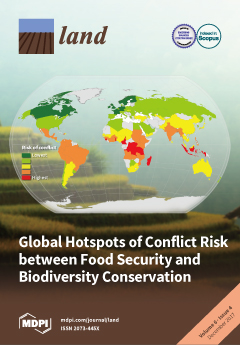Resource information
Currently, the UK has a high self-sufficiency rate in barley production. This paper assessed the effects of projected climate and land use changes on feed barley production and, consequently, on meat supply in the UK from the 2030s to the 2050s. Total barley production under projected land use and climate changes ranged from 4.6 million tons in the 2030s to 9.0 million tons in the 2050s. From these, the projected feed barley supply ranged from approximately 2.3 to 4.6 million tons from the 2030s to the 2050s, respectively. The results indicate that while UK spring barley production will thrive under, and benefit from climate change, total land area allocated to barley production will ultimately determine self-sufficiency. Without expansion in the area of land and/or further significant increases in yields, the UK may face large deficits in domestic feed barley production and, for that matter, meat supply in the future. Hence, agricultural and food security policy needs to consider, principally, the effect of agricultural land use change on key crops, such as barley. Even though the UK can import feed barley or meat to address the deficits observed in this study, the question that needs to be addressed is where all that import will come from.


